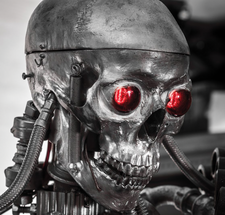Video surveillance with the Raspberry Pi
Eye in the Pi

© Lead Image © svedoliver, 123RF.com
Set up a professional video surveillance system armed with motionEyeOS and a Raspberry Pi.
Theft, vandalism, and property damage are commonplace occurrences today. Police investigations into such cases often come up empty, and the culprits escape undetected and unpunished. As a result, sales of video surveillance systems consisting of several cameras and a video recorder are booming. Here, I show you how, armed with just a Raspberry Pi and motionEyeOS, you can catch the culprits in the act.
Thanks to inexpensive IP and USB cameras, you can find numerous software packages for the home that can be used to upcycle a computer into a full-fledged video surveillance system. However, these solutions all have a serious disadvantage: They have to run constantly and require a correspondingly large amount of energy.
Professional surveillance cameras are bulky and usually attached by a cable to a control unit; just cutting the data cable will disable the camera. Video surveillance with the Raspberry Pi and the motionEyeOS [1] free operating system, on the other hand, is simple, less conspicuous, and less expensive.
[...]